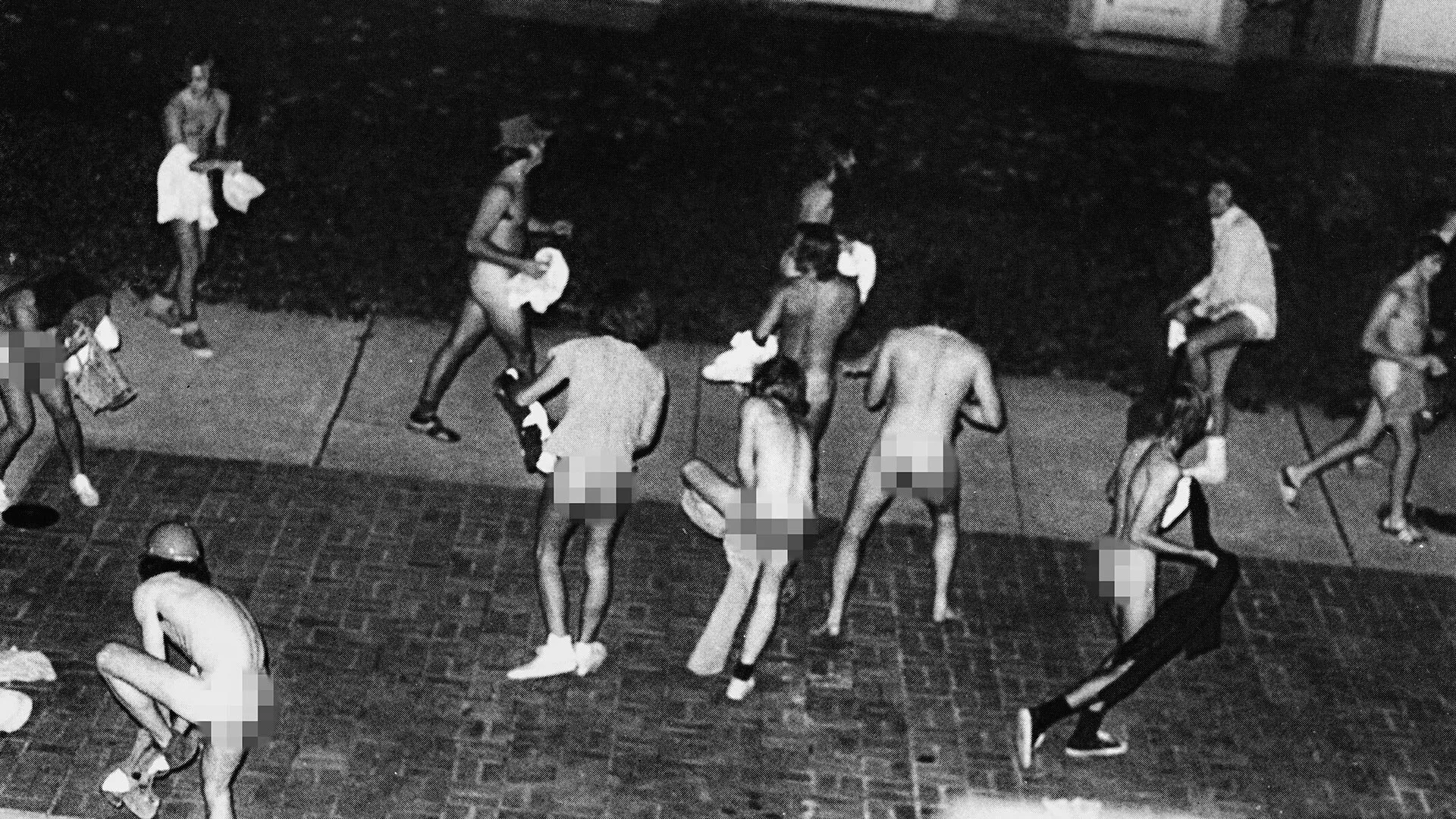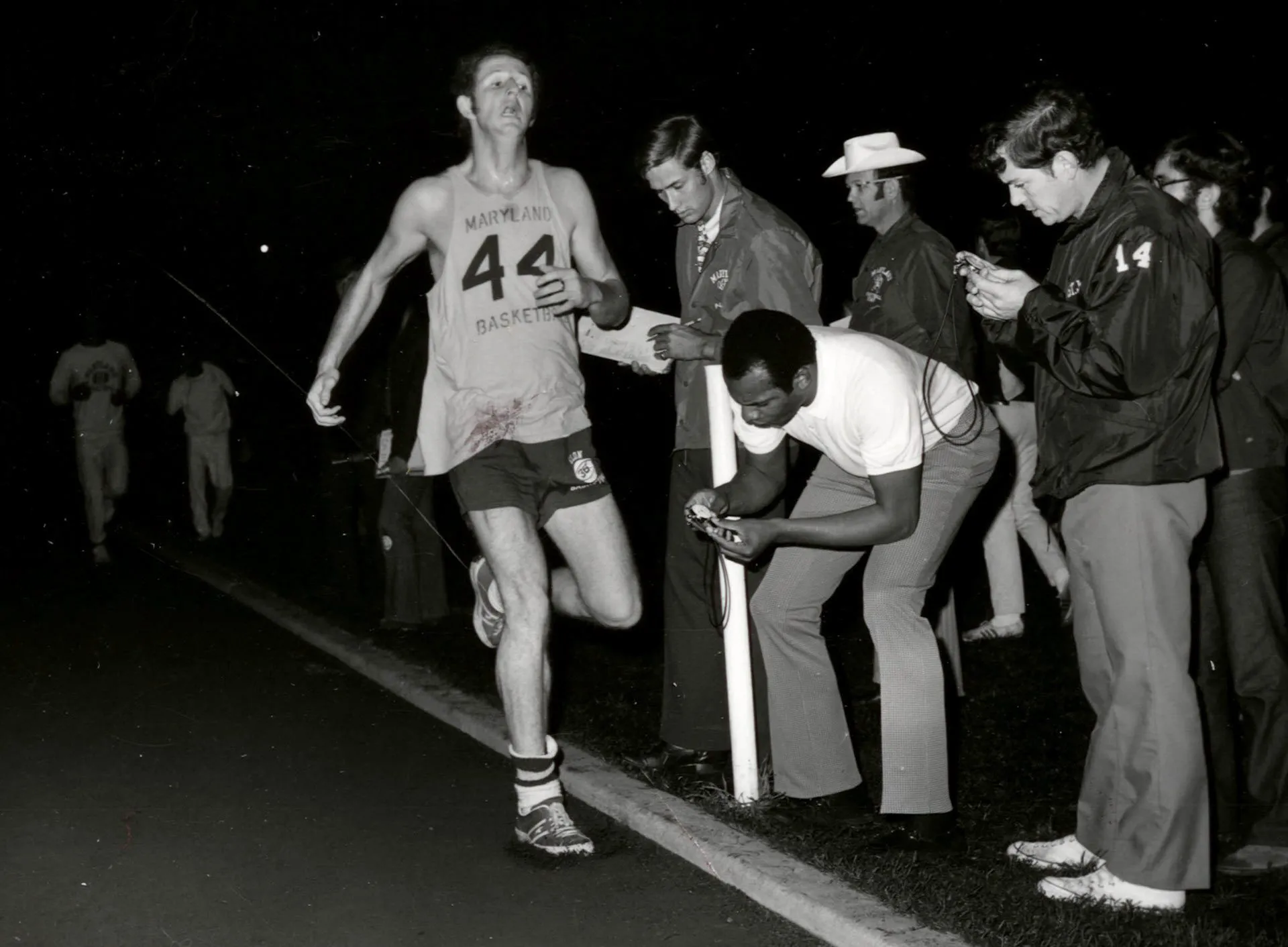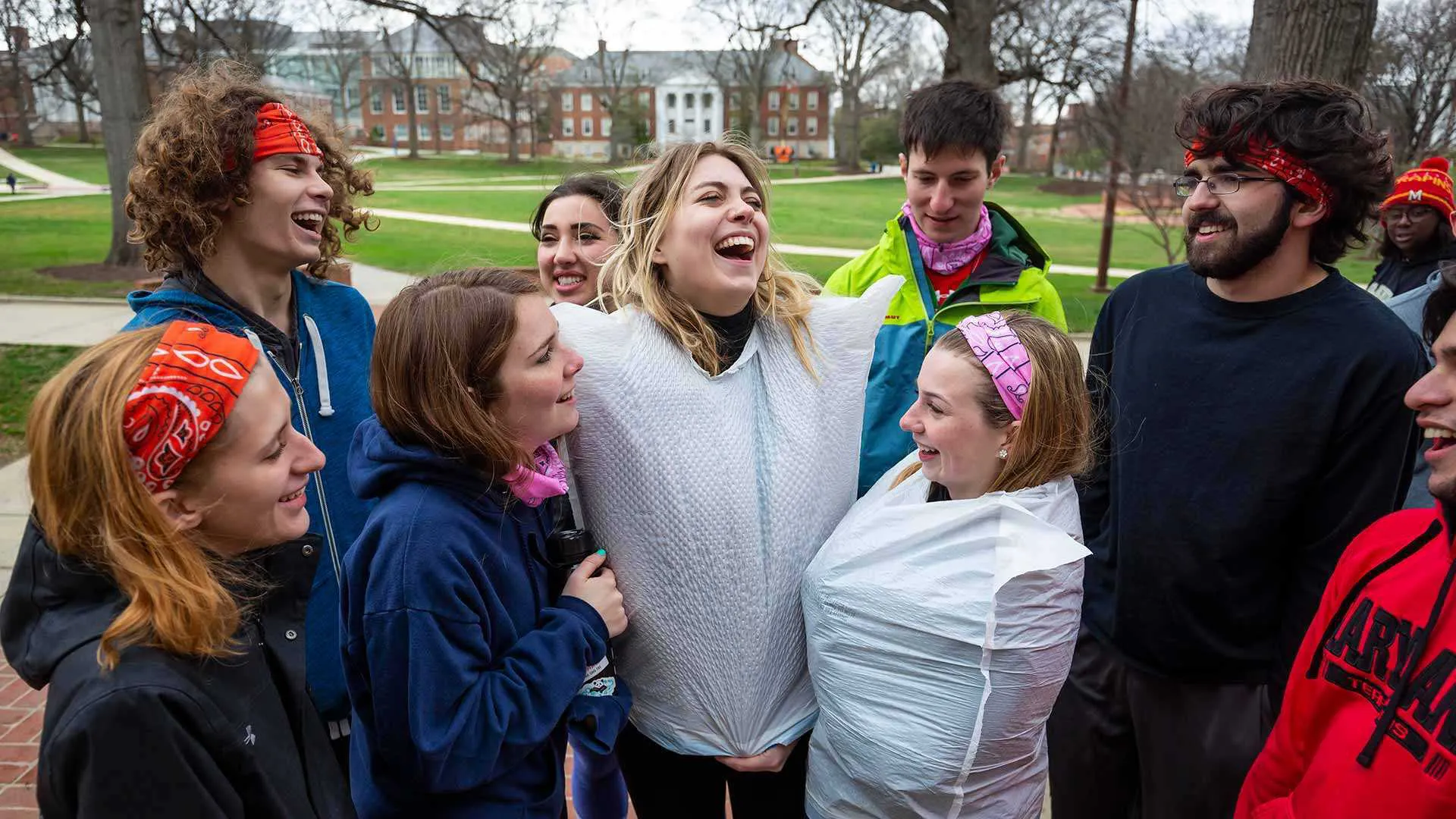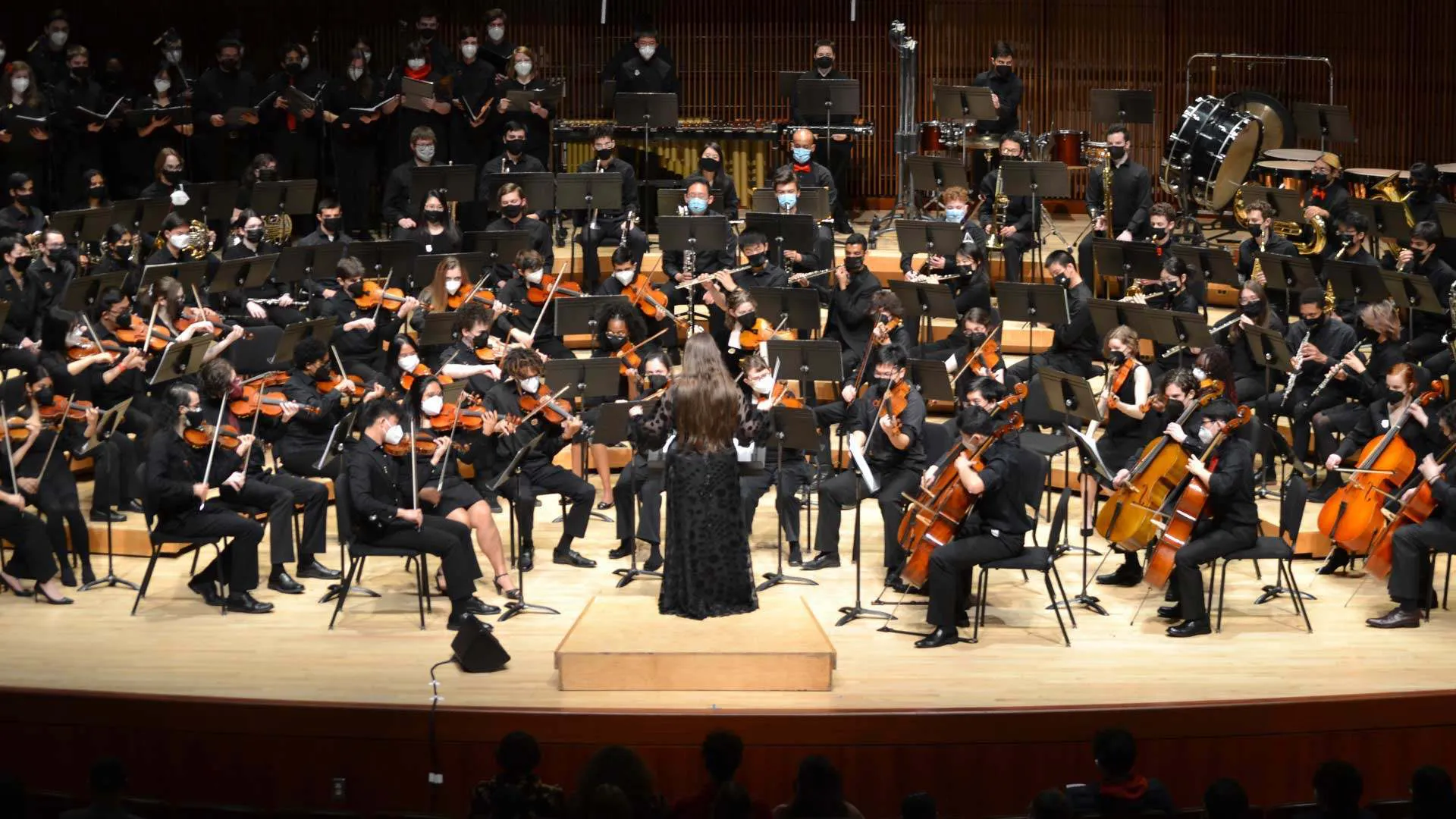- March 31, 2023
- By Annie Krakower
Even when Terps were doing the—ahem—bare minimum, they were blazing a trail for fellow students across the country.
The naked truth is that streaking, a popular prank in the late 1960s and ’70s, appears to have roots at the University of Maryland—but please don’t get any ideas this April Fools’ Day. It’s just one of many student-founded trends that trace their origins back to campus. From quirky clubs to service groups to athletic traditions, here are five of them:

Cheeky Shenanigans
Terps weren’t only pioneers in the undressed craze in the era of free love and hippies; they also reportedly inspired the word “streaking” itself.
In March 1969, The Diamondback wrote of a “barrage of nude runners” on campus. Word was the fad had started as a pushback to the uproar over nude photos published in the Baltimore campus’ literary magazine.
But as the naked outings continued years later, the reasons for running became more varied. Another article in 1973 noted three main categories: “those who run as an ‘initiation’ to university life, those who run ‘just for the hell of it,’ and those who consider running nude as ‘something I’ve got to do before I graduate.’” According to The Week, one such mass nude escapade on campus inspired a D.C. reporter to exclaim, “They are streaking past me right now. It is an incredible sight!” The phrase was picked up by the Associated Press the next day to appear in news outlets nationwide.
Students on other campuses, like the University of Georgia and the University of South Carolina, soon held infamous runs of their own, but the Washington Evening Star in 1974 clarified that UMD had claimed the first such sprint five years earlier.

The Mile That Spurred the Madness
But UMD also specializes in fully clothed runs—ones that evolved into festive celebrations for colleges around the country to start their basketball seasons on the right track.
At 12:03 a.m. on Oct. 15, 1971, the first possible day to hold practice that year per NCAA rules, men’s basketball head coach Lefty Driesell got a jump start on the season by having his squad run a mile around what’s now SECU Stadium. Hundreds of students lined the track to watch the spectacle unfold, lighting the stadium with their cars’ headlights.
By the next year, the Midnight Mile, as it’s now known, evolved into a scrimmage in Cole Field House and later into a full-on fan-fest called Midnight Madness. The idea was a slam dunk, inspiring similar events nationwide, like the University of Kansas’ Late Night in the Phog, the University of Kentucky’s Big Blue Madness and Indiana University’s Hoosier Hysteria.

Outwit, Outplay, Do Your Homework
As CBS airs its whopping 44th season of “Survivor,” dozens of colleges are filming their own versions of the strategic reality show, thanks to Terps.
Upon arriving at UMD, superfan Austin Trupp ’15 thought the green lawns and brick buildings of campus would make an interesting substitute for the real show’s exotic islands, launching “Survivor Maryland” in 2012. The smartphone-shot seasons feature 16-20 Terp contestants competing in challenges—which can involve everything from balance beam races to chicken tendie-eating contests—forming alliances and voting each other out until a winner emerges.
The idea caught on, with the student show now seeking applicants for season 21 and past episodes garnering thousands of views on YouTube. Fans popped up beyond Maryland, and now campuses like Ohio State, Michigan, Emerson, Virginia, UConn and more add to the “castaway” community.
“Maryland definitely set the blueprint,” Greg Friedberg, creator of Ohio State’s “Survivor: Time and Change,” told Terp magazine in 2019.

A Different Way to “Play” Video Games
Have you ever found yourself jamming to the catchy soundtracks while playing “Halo,” “Super Mario” or “Pokémon”? UMD students took that same enthusiasm and turned it into the first collegiate ensemble to exclusively perform video game music.
The Gamer Symphony Orchestra premiered in 2005, when violist Michelle Eng ’07 recruited a few fellow UMD Repertoire Orchestra members and played songs from “The Legend of Zelda” and “Final Fantasy” at Maryland Day.
“There’s a very strong overlap between people who are into video games and exploring different genres, who also enjoy weird forms of music,” said current President Zach Calcagno ’23.
The club has crescendoed in popularity since, with competitive auditions resulting in around 140 members playing two packed campus shows per semester. It’s even gained enough prestige to earn invitations to play at the Smithsonian and the Kennedy Center.
Now, others are keeping the melody going with their own gamer symphony orchestras at Ithaca College, the University of Delaware, Magruder and Damascus high schools, and more.

A Hunger- and Waste-Fighting Force
What started with a pizza at the Stamp Student Union has become a fully baked do-good group spanning 190 campuses in 46 states and D.C.
When Evan Ponchick ’12 (above, far right) noticed full pies being thrown away at the end of the day, he made it his mission to put the leftovers to better use. With help from Dining Services, he and fellow Alpha Phi Omega members began gathering unserved dining hall food and bringing it to those in need at local nonprofits.
Another Terp, Ben Simon ’14 (above, second from right), soon joined forces with Ponchick and by Fall 2011 had officially established the group as Food Recovery Network.
The movement soon spread to Brown University, then Pomona College and the University of California, Berkeley. Today, not only has the now-national organization recovered 12.1 million pounds of food and donated 10.1 million meals, it’s also inspired other companies with similar waste-reducing goals, like the Terp-founded Imperfect Foods and Hungry Harvest.
“It’s really crazy if you think about it,” Simon told Terp in 2021, “because Food Recovery Network has continued to grow, and then the ugly produce movement, which has now expanded into the world of grocery and this larger food recovery movement … so much of this was started right at the University of Maryland.”
Topics
Campus & Community